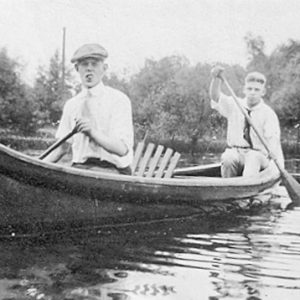calsfoundation@cals.org
Cherry Valley (Cross County)
| Latitude and Longitude: | 35º24’07″N 090º45’11″W |
| Elevation: | 282 feet |
| Area: | 0.77 square miles (2020 Census) |
| Population: | 575 (2020 Census) |
| Incorporation Date: | August 6, 1910 |
Historical Population as per the U.S. Census:
|
1810 |
1820 |
1830 |
1840 |
1850 |
1860 |
1870 |
1880 |
1890 |
1900 |
|
– |
– |
– |
– |
– |
– |
– |
– |
– |
– |
|
1910 |
1920 |
1930 |
1940 |
1950 |
1960 |
1970 |
1980 |
1990 |
2000 |
|
– |
– |
– |
– |
521 |
455 |
556 |
729 |
659 |
704 |
|
2010 |
2020 |
|
|
|
|
|
|
|
|
|
651 |
575 |
|
|
|
|
|
|
|
|
The second-class city of Cherry Valley (Cross County) began as a small settlement near the junction of Cooper’s Creek and the Harrisburg Road sometime around the Civil War. The construction of north-south railroad tracks on the lowlands west of Crowley’s Ridge caused the town to move closer to the rails in the 1880s. An agriculturally rich area, Cherry Valley also capitalized on its position at the intersection of Arkansas State Highways 1 and 42. As of 2012, the town of 651 people primarily focuses on agriculture and related businesses.
While the Casqui, Quapaw, Osage, and Cherokee, among others, probably traversed or claimed the Cherry Valley area over time, no actual signs of habitation exist. The Cherry Valley Mounds, located near the town, have revealed a possible ceremonial site containing remains and artifacts from a differing culture compared to neighboring northeastern Arkansas groups. The term the Cherry Valley Phase (1100–1400) describes this cultural period.
The original settlement of Cherry Valley developed on Crowley’s Ridge near the juncture of Cooper’s Creek and the Harrisburg Road; it was named for a grove of cherry trees near the creek. Dates of the founding of the town are sketchy, with Richard L. Hartness, noted Cross County historian, citing the date as perhaps 1867, and other sources generally giving a range of 1860 to 1870. A post office was opened in Cherry Valley at the farm of G. W. Stacy in 1870.
Cherry Valley’s dependence on the Harrisburg Road lessened when the Helena and Iron Mountain Railroad (later the St. Louis, Iron Mountain and Southern) completed the north-south track on the west side of Crowley’s Ridge in 1882. That same year, Stacy built a hotel along the tracks, possibly the first structure in the new location, and the post office moved there. Raw and finished timber products were moved to regional markets using the railroad, and the cleared ground was quickly converted to farmland. By 1889, the town had a school, two churches, two general stores, a stave mill, a cotton gin, and two sawmills. In 1893, vigilantes lynched an African American man, Bob Greenwood, near Cherry Valley.
The continued growth of Cherry Valley resulted in formal incorporation in 1910. While agricultural prices continued to fluctuate during the early twentieth century, the town did well due to rail access. By 1947, most of the streets in town had been paved. During the 1950s, Cherry Valley had a number of general and specialty stores, cafés, a theater, and four white and two African-American churches. Additionally, the Cherry Valley School District operated a white school in Cherry Valley and separate white and black elementary schools in Birdeye (Cross County) until schools desegregated.
The 1960s continued to show reasonable economic health. By 1961, the town had installed a water system, to be followed by a sewer system in 1966. Additionally, a new post office building was dedicated in 1965. The school burned in December 1962, forcing Cherry Valley students to go to Harrisburg (Poinsett County). Unable to maintain separate high schools, the towns of Cherry Valley, Vanndale (Cross County), and Hickory Ridge (Cross County) consolidated grades 7–12 into one building three miles outside Cherry Valley in 1967. In 2009, the elementary schools of these same communities were also moved into a single building near the high school. Currently, the Cross County School District has around 635 students.
Agricultural businesses are still the mainstay of the Cherry Valley economy. As farmers have mechanized and consolidated holdings into larger tracts, the town has experienced population fluctuations. Rice and soybeans have now become dominant in the lowlands, with cattle being raised on Crowley’s Ridge. The largest employer in Cherry Valley is ECS House Industries, Inc., which makes customized farming equipment. Two banks began providing services for the citizens and local farmers of Cherry Valley in the early 1990s. The Bank of Cherry Valley, originally founded in 1907, was purchased by the First National Bank around the same time the Cherry Valley branch of the Cross County Bank opened in the town.
Several former residents of Cherry Valley have become famous. Paul Holden Young made bamboo fishing rods that are highly collectible items. Blues guitarist Auburn “Pat” Hare became known for the use of distortion in blues music. Wayne Martin played football for the New Orleans Saints, and his brother Jeff Martin played basketball for the Los Angeles Clippers before playing several seasons in Europe.
The town holds an annual festival, Cherry Fest, the last Saturday in September at the city park, with music, food, and activities.
For additional information:
Chowning, Robert W. History of Cross County, Arkansas, 1955.Wynne, AR: The Wynne Progress, 1955.
Hartness, Richard L. Wittsburg, Wynne, & Points Nearby…. Conway, AR: Conway Printing Company, 2009.
Derek Allen Clements
Black River Technical College
 Cherry Valley
Cherry Valley  Cherry Valley Depot
Cherry Valley Depot  Cross County Map
Cross County Map  Paul Young
Paul Young 




Comments
No comments on this entry yet.